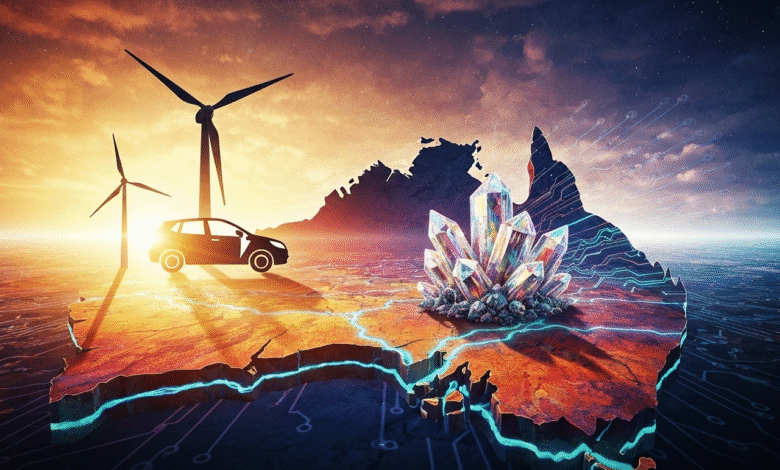Australia Poised to Become World’s Second-Largest Rare Earth Supplier

▼ Summary
– Australia could surpass the US to become the world’s second-largest rare earth element producer after China, driven by growing demand from renewable energy and technology sectors.
– China currently dominates global rare earth production, supplying 70% of total output and controlling 99.9% of heavy rare earths used in EVs and wind turbines.
– Australia possesses abundant light rare earth elements like neodymium and praseodymium but lacks significant reserves of heavy rare earths such as dysprosium and terbium.
– Multiple Australian projects with government support are advancing, including Lynas Rare Earths and the Eneabba Refinery, which could help Australia supply 15-20% of global NdPr demand outside China.
– Reducing reliance on China is a key motivation, as its control over processing and exports poses supply chain risks, while global EV sales and clean energy needs fuel soaring rare earth demand.
Australia stands on the verge of transforming into the globe’s second-biggest rare earth supplier, potentially overtaking the United States in production capacity. These essential minerals, known as rare earth elements (REEs), are fundamental to renewable energy systems and advanced technology components. With demand projected to surge beyond current supply limits, Australia’s emergence as a major player comes at a crucial time. Last year alone, renewable sources made up 92.5 percent of newly installed power capacity worldwide, and the consumer electronics sector is forecast to hit $18 trillion within the next decade.
A recent analysis by Earth Rarest, a specialized intelligence platform, examined Australia’s mining sector and the lineup of REE projects under development. The study highlights how Australia could significantly boost its contribution to the international market. Currently, China dominates the rare earth industry, accounting for roughly 70 percent of worldwide output—about 270,000 tonnes annually. The United States contributes 12 percent, while Australia produces just 3 percent. China also commands 99.9 percent of heavy rare earth production, materials vital for electric vehicle motors, wind turbines, and LED screens.
This overwhelming control introduces serious vulnerabilities into global supply chains. China holds most of the downstream processing technology and expertise, making it a pivotal—and hard to replace—link in the REE value network. This position allows it to influence prices significantly. In the past, China has suspended rare earth exports, and since April 2025 it has imposed tight export restrictions on seven specific rare earth elements.
Australia’s deposits are rich in light rare earths—neodymium, praseodymium, cerium, and lanthanum—which represent about 85 percent of global consumption. These elements are indispensable for manufacturing electric vehicle motors, permanent magnets in wind turbines, and various camera systems. However, the nation has limited known reserves of heavy rare earths such as dysprosium and terbium.
Backed by federal government support, multiple Australian projects are advancing to expand production capacity. Lynas Rare Earths in Western Australia is expected to reach 17,500 tonnes of total rare earth oxide output by year’s end. The Eneabba Refinery, also in WA and set to be Australia’s first domestic REE processing plant, will begin operations next year. In the Northern Territory, the integrated Nolan’s Project mine and processing facility is under construction and has already secured supply agreements with Hyundai, Kia, and Siemens. Additionally, the Browns Range project in WA will concentrate on extracting heavy rare earth elements.
Earth Rarest’s analysis predicts that if these ventures proceed according to schedule, Australia could satisfy 15 to 20 percent of worldwide demand for neodymium and praseodymium outside China. This would position the country as the number two global REE supplier.
According to Russell Gous, a spokesperson for Earth Rarest, Australia must intensify its investments across the entire rare earth value chain—mining, processing, and manufacturing. Although technical capabilities outside China are still maturing, strong political will exists in Australia and among allied nations to lessen dependence on Chinese critical minerals. With more than 17 million electric cars sold last year, bringing the global EV fleet beyond 58 million vehicles, demand for rare earths is climbing steeply. Thanks to projects already in motion, Australia is steadily advancing and appears well positioned to lead Western nations in supplying materials essential for clean energy, consumer electronics, and defense technologies.
(Source: ITWire Australia)





